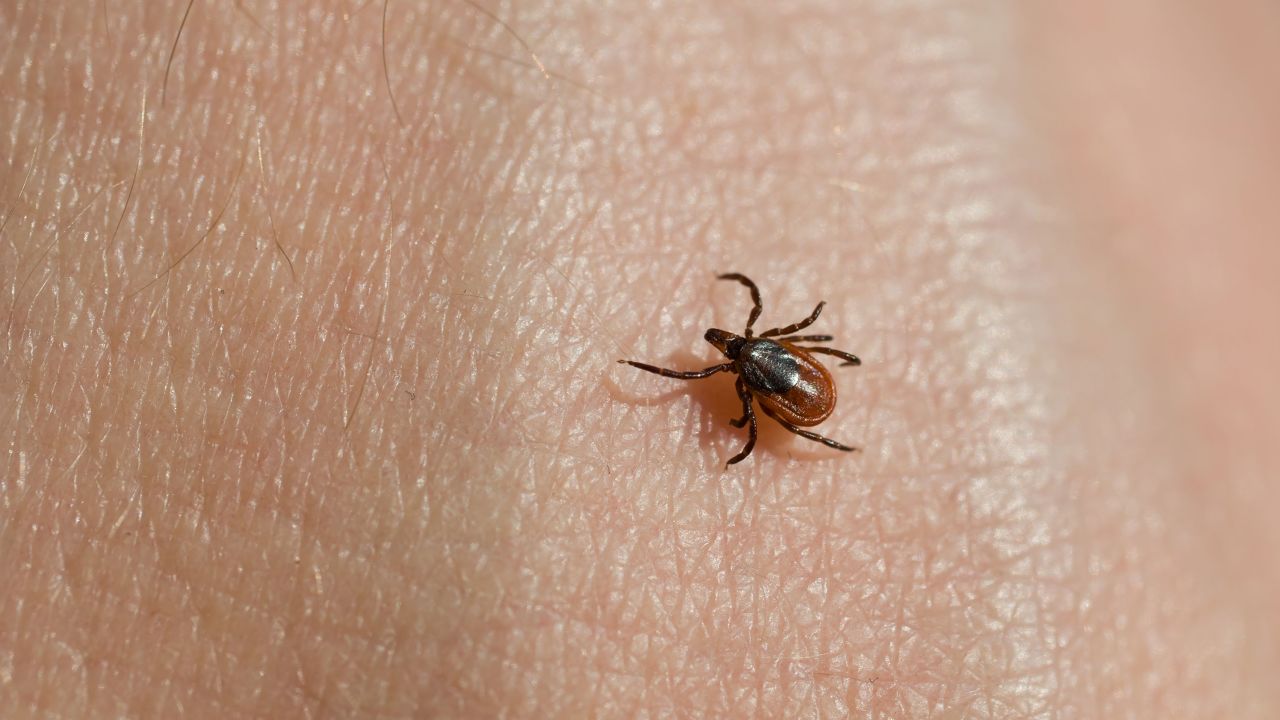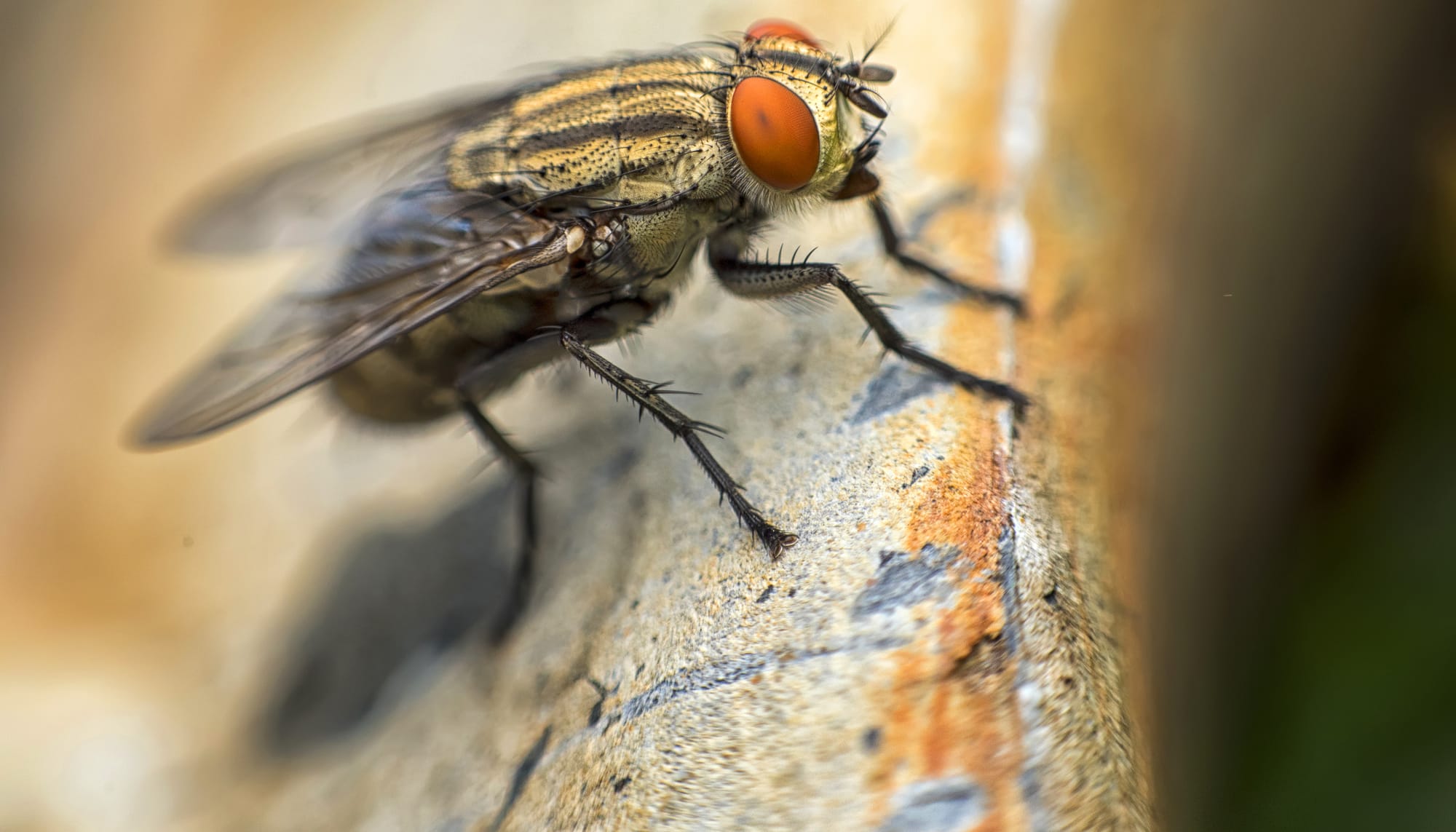Home>Gardening News and Trends>Latest News>What Insects Can Carry Lyme Disease


Latest News
What Insects Can Carry Lyme Disease
Modified: January 22, 2024
Discover the latest news on what insects can carry Lyme disease. Stay informed about the risks and prevention measures to protect yourself.
(Many of the links in this article redirect to a specific reviewed product. Your purchase of these products through affiliate links helps to generate commission for Chicagolandgardening.com, at no extra cost. Learn more)
Table of Contents
Introduction
Lyme disease is a debilitating illness caused by the bacterium Borrelia burgdorferi. It is primarily transmitted through the bite of infected black-legged ticks, also known as deer ticks.
This disease was first identified in the town of Lyme, Connecticut, in the 1970s, hence its name. Since then, it has become increasingly prevalent in many parts of the world, including the United States, Europe, and Asia.
Lyme disease can have serious and long-term effects on the human body if left untreated. It can affect various systems, including the skin, joints, nervous system, and heart. Early diagnosis and treatment are crucial for a full recovery.
In recent years, there has been growing concern about the potential transmission of Lyme disease by other insects, apart from ticks. While ticks are the primary vectors of Lyme disease, some studies suggest that other insects may also play a role in its transmission.
This article aims to explore the various insects known to carry Lyme disease, the risks they pose, and the measures individuals can take to protect themselves against this illness.
What is Lyme Disease?
Lyme disease is an infectious disease caused by the bacterium Borrelia burgdorferi, which is primarily transmitted to humans through the bite of infected black-legged ticks. It is considered a vector-borne illness, meaning it is transmitted to humans through specific vectors, in this case, ticks.
The symptoms of Lyme disease can vary from person to person, making it challenging to diagnose. Common early symptoms include fever, fatigue, headache, muscle and joint aches, and swollen lymph nodes. As the disease progresses, more severe symptoms may develop, such as facial paralysis, heart palpitations, and even neurological problems.
If left untreated or not diagnosed in its early stages, Lyme disease can have long-term effects on the body, including joint inflammation, cognitive problems, and chronic fatigue. It is important to seek medical attention if you suspect you may have been bitten by a tick and are experiencing any suspicious symptoms.
It is worth noting that not all ticks carry the bacterium that causes Lyme disease. In fact, the majority of ticks are not infected. However, it is crucial to take precautions to prevent tick bites and to conduct regular checks for ticks, as the consequences of contracting Lyme disease can be severe.
Prevention is key in avoiding Lyme disease. Protecting yourself from tick bites is essential, particularly if you live or spend time in areas where ticks are prevalent. Understanding the transmission of Lyme disease and the insects involved in its spread can help individuals take necessary precautions and reduce their risk of infection.
Transmission of Lyme Disease
Lyme disease is primarily transmitted to humans through the bite of infected black-legged ticks, or deer ticks. These ticks become infected with the bacterium Borrelia burgdorferi after feeding on infected animals, such as mice, birds, or deer.
When an infected tick bites a human, it transmits the bacterium into the bloodstream. However, it’s important to note that not all tick bites result in the transmission of Lyme disease, as the tick must be infected and attached to the skin for a certain period of time.
The transmission of Lyme disease typically occurs during the warmer months when ticks are most active. Ticks are commonly found in wooded areas, tall grasses, and areas with a high population of wildlife.
Once the bacterium enters the human body through the tick bite, it can spread to different areas. This can lead to a range of symptoms, from mild to severe, depending on the individual and the progression of the disease.
It is important to be aware that Lyme disease is not contagious and cannot be transmitted from person to person. It can only be contracted through the bite of an infected tick.
While ticks are the primary vectors for Lyme disease, there is ongoing research to investigate the potential role of other insects in its transmission. Although rare, some studies have suggested that mosquitoes and fleas may also be able to transmit the bacterium to humans. However, more research is needed to fully understand the extent of their involvement in the spread of Lyme disease.
Understanding the transmission dynamics of Lyme disease is crucial in taking appropriate preventive measures. By reducing exposure to ticks and promptly removing any attached ticks, individuals can significantly lower their risk of contracting this debilitating illness.
Insects Known to Carry Lyme Disease
While ticks are the primary carriers of Lyme disease, there is ongoing research to determine the role of other insects in the transmission of this illness. While findings are still inconclusive, some studies suggest that mosquitoes and fleas may also be able to transmit the bacteria responsible for Lyme disease to humans.
Tick species such as the black-legged tick (Ixodes scapularis) and the western black-legged tick (Ixodes pacificus) have been extensively studied as the primary vectors of Lyme disease. These ticks are commonly found in wooded and grassy areas, where they latch on to animals and humans to feed on their blood.
In recent years, researchers have also identified other tick species capable of transmitting Lyme disease. For example, the lone star tick (Amblyomma americanum) has been found to carry the bacterium and has been linked to cases of Lyme disease in certain regions. However, it is important to note that the risk of contracting Lyme disease from these tick species may vary depending on the geographic location.
While mosquitoes are primarily associated with the transmission of diseases such as malaria and dengue fever, there is limited evidence to suggest that they may also play a role in transmitting Lyme disease. Some studies have detected the presence of the Lyme disease bacterium in mosquitoes, raising the possibility that they could transmit the infection. However, further research is needed to fully understand the potential role of mosquitoes in the spread of Lyme disease.
Fleas, commonly known for transmitting diseases such as the plague, have also been investigated as potential carriers of Lyme disease. While fleas have been found to carry the bacterium in laboratory settings, there is limited evidence of their involvement in transmitting the infection to humans in natural settings.
It is important to note that the risk of contracting Lyme disease from mosquitoes and fleas is believed to be relatively low compared to tick bites. However, it is always recommended to take precautions when in areas where these insects are present and to seek medical attention if any suspicious symptoms develop after possible exposure to these insects.
As research continues to advance our understanding of the transmission of Lyme disease, it is crucial for individuals to stay informed about the latest findings and to take appropriate measures to protect themselves from tick bites, which remain the primary mode of transmission for this debilitating illness.
Ticks as Vectors of Lyme Disease
Ticks are the primary vectors of Lyme disease, responsible for transmitting the bacterium Borrelia burgdorferi to humans. The black-legged tick (Ixodes scapularis) and the western black-legged tick (Ixodes pacificus) are the main tick species known to carry and transmit Lyme disease in the United States.
These ticks are typically found in wooded areas, tall grasses, and areas with a high population of wildlife, where they can easily latch onto animals and humans to feed on their blood.
When a tick feeds on an infected animal, such as mice, birds, or deer, it becomes infected with the bacterium. Once the tick is infected, it can transmit the bacterium to humans during subsequent feeding.
The risk of contracting Lyme disease from a tick bite depends on various factors, including the duration of attachment, the tick’s infection status, and the region in which the tick bite occurs.
It is important to note that not all ticks carry the bacterium that causes Lyme disease. In fact, the majority of ticks are not infected. However, it is vital to take precautions to prevent tick bites and to conduct regular checks for ticks, especially after spending time in tick-prone areas.
Tick bites are typically painless, and ticks can remain attached to the skin for several hours to days before transmitting the bacterium. Therefore, early detection and timely removal of attached ticks are crucial in preventing the transmission of Lyme disease.
Proper tick removal involves using fine-tipped tweezers to grasp the tick as close to the skin’s surface as possible and pulling upward with steady and even pressure. It is important to avoid twisting or jerking the tick, as this can cause the mouthparts to break off and remain embedded in the skin.
After removing the tick, clean the affected area with soap and water and apply an antiseptic to the bite site. It is also recommended to save the tick in a container, in case further identification and testing are needed.
Early symptoms of Lyme disease include fever, fatigue, headache, muscle and joint aches, and swollen lymph nodes. If you experience these symptoms after a tick bite, it is important to seek medical attention, as early diagnosis and treatment can help prevent the progression of the disease.
Prevention is key when it comes to Lyme disease. By taking precautions such as wearing protective clothing, using insect repellent, and avoiding tick-infested areas, individuals can significantly lower their risk of tick bites and the potential transmission of Lyme disease.
Mosquitoes as Potential Vectors of Lyme Disease
Mosquitoes are well-known vectors for various infectious diseases such as malaria, dengue fever, and Zika virus. However, there is ongoing research to determine if mosquitoes can also transmit Lyme disease.
While ticks are the primary vectors of Lyme disease, some studies have detected the presence of the bacterium Borrelia burgdorferi, responsible for Lyme disease, in mosquitoes. This raises the possibility that mosquitoes could potentially transmit the infection to humans.
However, it is important to note that the role of mosquitoes in the transmission of Lyme disease is not yet fully understood. Currently, there is limited evidence to suggest that mosquitoes are capable of efficiently transmitting the bacterium, and further research is needed to validate these findings.
Unlike ticks, which attach to their hosts for an extended period of time during feeding, mosquitoes have a shorter feeding duration. This may reduce the likelihood of transmission of Lyme disease if the mosquito becomes infected with the bacterium.
Furthermore, unlike ticks that can harbor the bacterium for an extended period, mosquitoes are not natural reservoirs for the Borrelia bacteria. This implies that mosquitoes may not be able to maintain and transmit the bacterium as effectively as ticks.
It is worth noting that the risk of contracting Lyme disease from mosquitoes is believed to be relatively low compared to tick bites. Therefore, the primary focus for preventing Lyme disease remains on tick bite prevention and awareness.
Nevertheless, it is always prudent to take precautions when in areas where mosquitoes and ticks are prevalent. This includes wearing long sleeves and pants, using insect repellent, and avoiding outdoor activities during peak mosquito and tick activity.
If you are concerned about potential exposure to Lyme disease, conducting regular tick checks on yourself, pets, and outdoor gear is crucial. Promptly removing any attached ticks can greatly reduce the risk of transmission.
As research continues, it is important to stay informed about the latest scientific findings regarding Lyme disease transmission. By taking necessary precautions, individuals can protect themselves against not only tick-borne diseases but also other potential vectors such as mosquitoes.
Other Insects as Carriers of Lyme Disease
While ticks are the primary carriers of Lyme disease, there is ongoing research to determine the potential role of other insects in the transmission of this illness. While the evidence is limited, some studies suggest that certain insects may carry the bacterium responsible for Lyme disease.
One such insect of interest is the fleas. Fleas are well-known vectors for other diseases, such as the plague. Although studies have shown that fleas can carry the bacterium that causes Lyme disease, there is limited evidence to suggest that they play a significant role in transmitting the infection to humans. Lyme disease transmission through flea bites is considered rare but not impossible.
Another insect of interest is the biting flies, commonly known as horseflies and deer flies. These flies are known to bite humans and feed on their blood. Recent research has suggested that some biting flies may carry the bacterium responsible for Lyme disease. However, further studies are needed to determine if biting flies can effectively transmit Lyme disease to humans.
In addition to fleas and biting flies, other insects such as mites and lice have also been investigated as potential carriers of the bacterium. Mites and lice are known to infest animals and occasionally bite humans. While they can carry the bacterium, the risk of transmitting the infection to humans is considered low.
It’s important to note that the primary mode of transmission for Lyme disease remains through the bite of infected ticks. The risk of contracting the disease from other insects is currently believed to be relatively low compared to tick bites.
However, it is still advisable to take precautions, such as wearing protective clothing, using insect repellent, and avoiding areas with high insect activity. Conduct regular tick checks on yourself, your pets, and your belongings after spending time outdoors, as ticks remain the primary concern for Lyme disease transmission.
As research continues to shed light on the potential role of other insects in the transmission of Lyme disease, it is important to stay informed about the latest scientific findings. By staying vigilant and taking necessary precautions, individuals can reduce their risk of contracting Lyme disease from not only ticks but also other potential carriers.
Prevention and Protection Against Lyme Disease
Prevention is key when it comes to protecting against Lyme disease. By taking proactive measures and following preventive guidelines, individuals can significantly reduce their risk of tick bites and potential infection. Here are some important preventive measures to consider:
- Wear appropriate clothing: When venturing into tick-prone areas, wear long-sleeved shirts, long pants, socks, and closed-toe shoes. Tucking in your shirt and tucking your pants into your socks can create a barrier, making it more difficult for ticks to reach your skin.
- Use insect repellent: Apply EPA-approved insect repellents containing ingredients such as DEET, picaridin, or oil of lemon eucalyptus on exposed skin and clothing. Follow the instructions carefully and reapply as needed.
- Perform tick checks: After spending time outdoors, thoroughly check your body for ticks. Pay attention to areas such as the scalp, behind the ears, under the arms, around the waist, and behind the knees. Promptly remove any ticks you find using fine-tipped tweezers.
- Create a tick-safe environment: Make your living spaces less attractive to ticks by keeping your grass mowed, removing leaf litter, and clearing tall grasses and weeds from your yard. Creating a barrier between your yard and nearby wooded areas can also help reduce tick exposure.
- Protect your pets: Use tick preventive products recommended by your veterinarian for your pets. Regularly inspect and groom your pets for ticks to prevent ticks from entering your home.
- Be cautious while traveling: If you are visiting a region known for Lyme disease, take extra precautions. Stay on well-maintained trails, avoid walking through tall grass or brush, and consider using tick repellents and clothing treated with permethrin.
Education and awareness are also vital in preventing Lyme disease. Stay informed about the prevalence of ticks in your area, the symptoms of Lyme disease, and the proper techniques for tick removal. It is important to seek medical attention if you suspect a tick bite or experience any suspicious symptoms.
By following these preventive measures, individuals can enjoy outdoor activities safely and reduce the risk of contracting Lyme disease. Stay proactive, protect yourself and your loved ones, and continue to stay informed about the latest developments in tick-borne disease prevention.
Conclusion
Lyme disease is a significant health concern, primarily transmitted through the bites of infected ticks. While ticks are the primary carriers and vectors for this illness, research is ongoing to determine the potential involvement of other insects, such as mosquitoes and fleas, in transmitting the disease. Despite these ongoing studies, the risk of contracting Lyme disease from sources other than ticks remains relatively low.
Understanding the transmission and prevention of Lyme disease is essential for individuals to protect themselves and reduce the likelihood of infection. Taking preventive measures, such as wearing appropriate clothing, using insect repellents, conducting regular tick checks, and creating a tick-safe environment, can significantly lower the risk of tick bites and subsequent Lyme disease transmission.
Timely diagnosis and treatment are crucial to minimize the potential long-term consequences of Lyme disease. Being aware of the symptoms, seeking medical attention if necessary, and understanding the proper techniques for tick removal are all essential aspects of disease prevention and management.
As research continues to uncover new insights into the transmission dynamics and potential vectors of Lyme disease, it is important for individuals to stay informed about the latest scientific findings and recommendations. By maintaining awareness and practicing preventive measures, people can enjoy outdoor activities safely while minimizing the risk of contracting Lyme disease or other tick-borne illnesses.
Ultimately, prevention and vigilance are the keys to protecting ourselves and our loved ones from Lyme disease. By taking proactive measures, individuals can minimize their risk and contribute to the overall reduction of Lyme disease cases worldwide.








